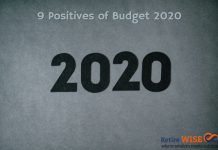The news related to budget must have started flowing around you. Budget is now more of a media event rather than an accounting exercise. Forget for a minute about the Indian Union budget just answer a simple question: What is budget? The definition goes like this – A budget is a list of all planned expenses and revenues. It is a plan for saving and spending. Be it you who do budgeting for your monthly income or expense or be your organization where you work – a budget is an organizational plan stated in monetary terms.
Check-How Does 2017-18 Budget Affect You
In the end of the article you can check highlights of latest budget.
- Provide a forecast of revenues and expenditures. On this our strategies, events and plans are carried out.
- Gives us a chance to measure actual to forecasts.
If you experience practically this is what we do in our investments also. We try to check our earnings and expenditures. The excess of earnings over expense is our saving and we put that saving in some capital use so that we get benefited in future. When this activity takes a macro form and is done by a nation, it becomes a Union Budget. Let’s try to figure out how does a Union or country like ours prepares it budget.
Read More – Budgeting – The First Step to Financial Success
What is Indian Union Budget?
The Budget is the annual statement of Government of India (GOI) accounts for the previous fiscal year. The Government makes provision for it expenditure. These provisions are compared with the actual income & expenditure. It is also a statement of next year’s tax and tariff provisions and a projection of the receipts and disbursements in the next fiscal year.
What is the Finance Bill?
It is the part of budget which are basically numbers. The Finance Bill contains the tax and tariff provisions and it has to be passed by parliament. If there are no changes from previous provisions, there can be a Vote on Account to extend previous provisions rather than a new Finance Bill. Once approved the Bill becomes the Finance Act and it is for a specific period. This is Part B in the Budget Speech.
Read – Budget for your savings and not spending!
What is the structure of the Budget?
The GoI finances are organised under three accounts. There is the Consolidated Fund, the Contingency Fund and the Public Accounts. There are receipts and disbursals on each account.
The Consolidated Fund includes all disbursals and receipts on the Capital and Revenue Accounts.
Contingency fund includes moneys at the disposal of the President and governors to be used to meet unforeseen expenditures in case of disasters.
The Public Account includes receipts and disbursals on the Small Savings, Public Provident Fund account and well as the government reserve and miscellaneous accounts.
What does the Revenue Account cover?
This is how the government earns. The revenue account includes tax and non-tax receipts and disbursals. Non-Tax receipts include accounts such as fiscal services (currency, coinage), Interest receipts, dividends and profits and other non-tax revenues such as receipts of different departments, and also grants such as external assistance.
What is the revenue deficit/surplus?
The difference between Revenue Receipts and Disbursements on the Revenue Account is known as the revenue surplus or deficit depending on whether receipts exceed disbursements or not. A Revenue Deficit is a dangerous signal since it means that government is spending more than it receives just keeping routine business running.
What is the Capital Account?
The Capital Account includes receipts and disbursals on the account of Public Debt and the recovery / disbursals of loans from state government.
What is a Capital Account Surplus/Deficit?
The difference between capital receipts and disbursals is the Capital Account Deficit or surplus. Wise investment on Capital Account is required to build infrastructure and other developmental activities since revenue account disbursals keep current programmes running. A Capital Account deficit may be justified if it is building assets that will be useful in future.
Read – India Shining – We will Rule the World
What is the Fiscal Deficit?
If you read any review on Indian capital markets from any of the Foreign Institutional Investor, it will always contain concerns over fiscal deficit. You keep this hearing it too often as a warning siren.
The difference between total government spending on account of revenue, capital and net loans and between total government receipts on account of revenue and of capital receipts that are not borrowings.
The important point to note is that accumulated interest burden from previous years is reflected in the Fiscal Deficit as well as this fiscal’s revenue and capital surpluses/ deficits. The Fiscal Deficit is usually shown as a percentage of GDP. A low Fiscal Deficit is considered the best symptom of financial health. India has a FD in the range of 5.6 per cent. This is much higher than considered safe.
What is plan and non-plan expenditure?
There are two components of expenditure – plan and non-plan. Plan expenditures are estimated after discussions between ministries and the Planning Commission. Plan Expenditure is designed for asset-building and infrastructure projects.
Non-plan revenue expenditure is accounted for by interest payments, subsidies (mainly on food and fertilisers), wage and salary payments to government employees, grants to States and Union Territories governments, pensions, police, economic services in various sectors, other general services such as tax collection, social services, and grants to foreign governments.
Non-plan capital expenditure includes defense, loans to public enterprises, loans to States, Union Territories and foreign governments.
The Non-Plan expenditure is generally considered useless at generating assets. However the NP Capital expenditure can include funding to states to help development projects in the states. In general, Plan expenditure is more useful however. So a cut in government spending that impacts Plan Expenditure may cause stagnation in future.
What is fiscal policy?
Fiscal policy is the taxation profile. Governments usually change taxation, volume of spending, and size of the budget deficit or surplus to affect public expenditure. This is voted in the Finance Bill. Fiscal policy is combination of a nations policy towards Taxation, Government Expenditure, Employment, Development of a country & Deficit planning.
What is the monetary policy?
Monetary Policy is the control of interest rates and money supply. Much of this is theoretically under the control of the autonomous RBI rather than the Finance Ministry. But some rates such as PPF / Small Savings are controlled by FM. They may be changed in the Budget.
Key Highlights of Indian Union Budget 2011-2012
- Income Tax Exemption limit increased from 1,60,000/- to 1,80,000/-. No change for Female Assesses.
- Sr. Citizen Exemption raised to from 2,40,000 to 2,50,000/-.
- Sr. Citizen eligibility criteria for age reduced to 60 from 65.
- A new category of Very Sr. Citizen created for age 80 and above with a tax exemption limit of 5 lacs.
- Mutual Funds permitted to accept investments from foreign investors in their equity schemes.
- Surcharge on Income tax for Corporates reduced to 5%. Minimum Alternate tax increased to 18.5%
- GDP grew by 8.6%
- Agriculture sector grew by 5.4%, Industrial Sector by 8.1%, Services sector by 9.5%
- Direct Tax Code to be implemented from 1/4/2012
- Divestment target for 2011-12 is 40,000/- Crore by maintaining 51% share in the companies which will be divested
- Fiscal Deficit down to 5.1% and estimated to be 4.6% for 2011-12
- Direct transfer of subsidy in cash to Below Poverty Line to be formulated soon under Nandan Nilekani.
- No other major change
Key features of budget 2011-2012
Key features of budget 2011 2012 This article is written by guest author Madhupam Krishna. A Post Graduate in Finance, currently he heads sales function for Rajasthan for Principal PNB Mutual Fund.
























Good one Hemant.
I have also written an article on impact of the budget on Income Tax at my website.
Hi Radhey,
I think this budget was like a missed opportunity.
I wonder when the details of DTC will be clear. Will it be passed as a bill in the budget session? It is being hyped as a savior for all those who have nightmares about taxes. Let’s see whether all the hype surrounding is for real or not.
Hi Sumeet,
Still we are not clear in what shape this will be launch but it will definitely bring a major change.
Comments are closed.